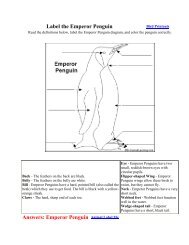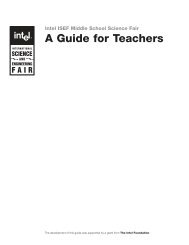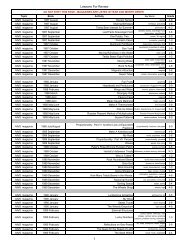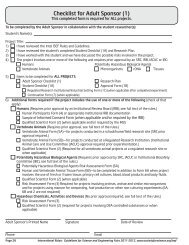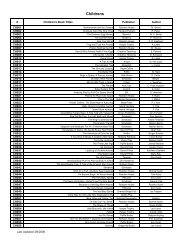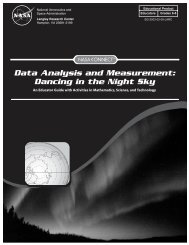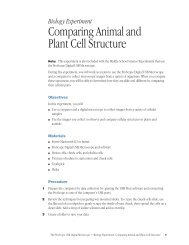BIOGRAPHY OF A RIVER
BIOGRAPHY OF A RIVER
BIOGRAPHY OF A RIVER
You also want an ePaper? Increase the reach of your titles
YUMPU automatically turns print PDFs into web optimized ePapers that Google loves.
measured and compared to a chart. The depth of visibility is determined by the degree ofturbidity in the body of water.B. Prepare 4-5 buckets of turbid water using tap water and local soil in various ratios. Mark theratios on the buckets. Try the Secchi disc experiment on each bucket to make sure that some haveno visibility.C. Prepare a chart on the board for data from each group.PROCEDUREI. Setting the stageA. Use the atmosphere and its particulate matter as an example to initiate discussion ofturbidity.B. Have students name/list particles in the air; then list particles in the water. Discusssimilarities.C. Discuss Background Information with students and review vocabulary.II.ActivityA. Have the students work in 4-5 groups. Number the groups for chalkboardrecording purposes.B. Each group needs 1 white gallon milk container, black permanent marker, ruler, largepetri dish, scissors.C. Cut out one complete side of the milk jug and place it under the lid of the petri dish a nddraw a circle. Cut it out. Use the ruler to divide and mark the circle in quarters. Color 2 oppositequarters black. This will resemble a small Secchi disc that is used to measure the clarity of water.Attach a string ½ meter in length to the middle of the disc with a stapler and mark the string everycentimeter.D. Have students stir each turbidity bucket and then immediately lower the Secchidisc into the bucket.3-76




